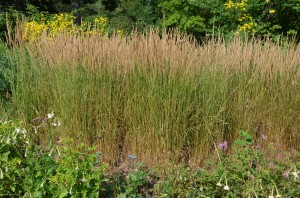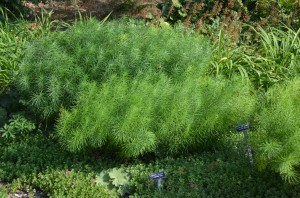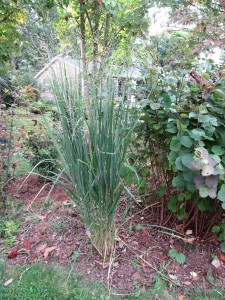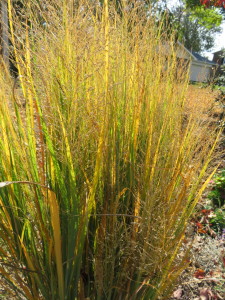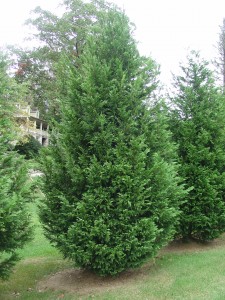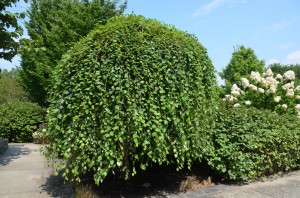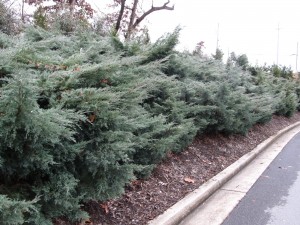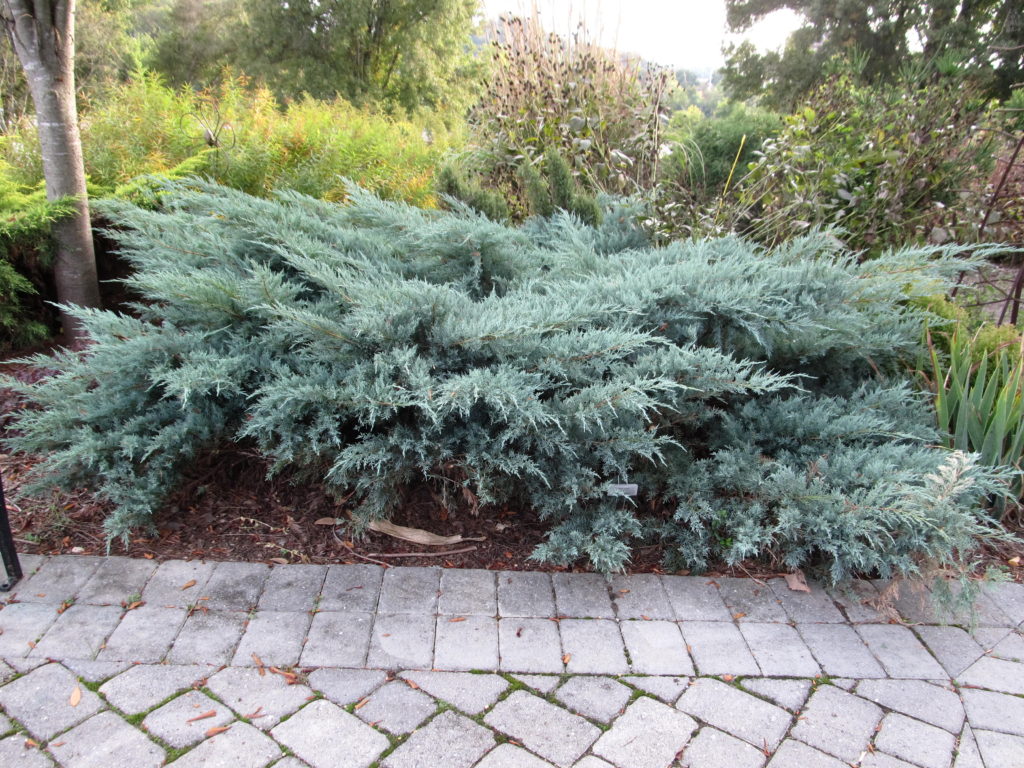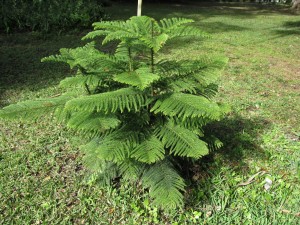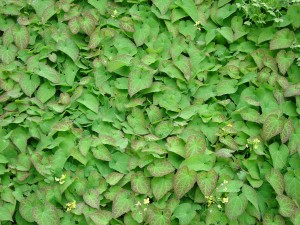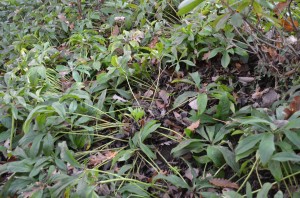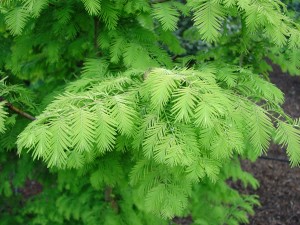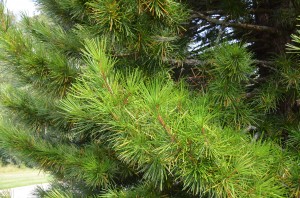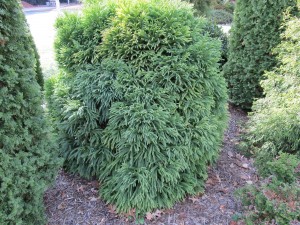
Cryptomeria 'Elegans Nana'
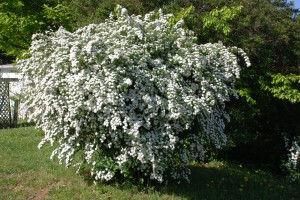
Deer Resistant 'Vanhouette' Spirea
Deer will eat or nibble on any landscape plant, particularly when they’re starving. Abnormally high deer populations, starved by a shortage of their favorite foods (mast), will feed or browse on almost any plant. This is a survival reaction. To truly protect plants when deer numbers are unusually high, a tall fence or reinforced netting may be your best options. Other preventatives include installing electrified fencing and spraying with commercially available repellents.
Deer do not read plant lists that they’re should not eat. The list below includes landscape shrubs that deer seem to bother less than most. The list is a compilation from wildlife experts in the eastern U.S. It does not include every landscape shrub reported and some potentially invasive species have been edited out.
Deer species and numbers vary across this big country. A deer’s food palate may differ from one region to another. It also depends on how hungry the deer in an area may be. Obviously, you should not be inviting deer by planting shrubs that are their dining favorites, such as yews (Taxus spp.), arborvitae (Thuja spp.), hemlock (Tsuga spp.), rhododendron, azalea, burning bush (Euonymus alata), and several others.
Some native shrubs such as bottlebrush buckeye, chokeberry, shrub dogwoods, elderberry, and brambles are important food sources for deer and other wildlife. Often, deer do little significant damage to the host plant(s) or they recover quickly. If you are planting young host shrubs into a landscape, you should fence them off for 3-5 years until they’re large enough and well established.
Deer Resistant Shrubs
Glossy Abelia (Abelia spp.)
Bottlebrush Buckeye (Aesculus parviflora)
Devil’s Walking Stick (Aralia spinosa)
Red Chokeberry (Aronia arbutifolia)
Goldust Plant (Aucuba japonica)
Barberry (Berberis spp.)
Butterfly Bush (Buddleia spp.)
Boxwood (Buxus spp.)
Beautyberry (Calicarpa spp.)
Heather (Calluna spp.)
All-spice Sweetshrub (Calycanthus floridus)
Blue Mist Shrub (Caryopteris clandonensis)
Plum Yew (Cephalotaxus harringtonia)
Japanese Flowering Quince (Chaenomeles japonica)
Flowering Quince (Chaenomeles speciosa)
Falsecypress (Chamaecyparis pisifera)
Fringetree (Chionanthus viriginicus)
Sweet Pepperbush (Clethra spp.)
Red Twig Dogwood (Cornus alba)
Red Osier Dogwood (Cornus sericea)
Hazelnut (Corylus spp.)
Smokebush (Cotinus coggygria)
Many Cotoneaster (Cotoneaster spp.)
Japanese Cedar (Cryptomeria japonica) -shrub forms
Daphne (Daphne spp.)
Deutzia (Deutzia spp.)
Redvein Enkianthus (Enkianthus campanulatus)
Heath (Erica spp.)
Forsythia (Forsythia x intermedia)
Fothergilla (Fothergilla spp.)
Common Witchhazel (Hamamelis virginiana)
Rose of Sharon (Hibiscus syriacus)
St. John’s Wort (Hypericum prolificum)
Most hollies (Ilex spp.) -those with spiny leaves
Virginia Sweetspire (Itea virginica)
Most Juniper species (Juniperus spp.)
Crape Myrtle (Lagerstroemia indica)
Common Privet (Ligustrum spp.)
Spicebush (Lindera benzoin)
Coast Leucothoe (Leucothoe axillaris)
Drooping Leucothoe (Leucothoe fontanesiana)
Japanese Kerria (Kerria japonica)
Beautybush (Kolkwitzia amabilis)
Saucer Magnolia (Magnolia x soulangiana)
Oregon Grape Holly (Mahonia aquifolium)
Leatherleaf Mahonia (Mahonia bealei)
Russian Arborvitae (Microbiota decussata)
Northern Bayberry (Myrica pensylvanica)
Holly Osmanthus (Osmanthus heterophyllus)
Sweet Mock Orange (Philadelphus coronarius)
Japanese Pieris, Andromeda (Pieris japonica)
Mugo Pine (Pinus mugo)
Bush Cinquefoil (Potentilla fruticosa)
Cherry Laurel (Prunus laurocerasus)
Firethorn (Pyracantha coccinea)
Buckthorn (Rhammus spp.)
Fragrant Sumac (Rhus aromatica)
Currants (Ribes spp.)
Brambles (Rubus spp.)
Elderberry (Sambucus canadensis)
Sweet Box (Sarcoccoca hookeriana)
Japanese Spirea (Spiraea japonica)
Bridalwreath Spirea (Spiraea prunifolia)
Anthony Waterer Spirea (Spiraea x bumalda)
Snowberry (Symphoricarpos albus)
Coralberry (Symphoricarpos x chenaultii)
Japanese Tree Lilac (Syringa reticulata)
Common Lilac (Syringa vulgaris)
Bald Cypress (Taxodium distichum) -shrub forms
Koreanspice Viburnum (Viburnum carlesii)
Arrowwood Viburnum (Viburnum dentatum)
Cranberry Viburnum (Viburnum opulus)
Doublefile Viburnum (Viburnum plicatum tomentosum)
Blackhaw Viburnum (Viburnum prunifolium)
Leatherleaf Viburnum (Viburnum rhytidophyllum)
Judd Viburnum (Viburnum x juddii)
Weigela (Weigela florida)

